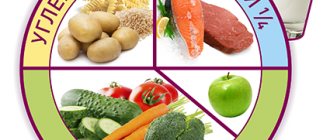Introduction
The question of first complementary feeding arises before every mother several months after the birth of the baby. It often causes a lot of controversy and disagreement. How to introduce complementary foods correctly? When is the best time to start this process and what to use first? How to make sure your baby is ready? When to introduce complementary foods during artificial feeding? Let's try to figure out what the World Health Organization (WHO) and the Russian Union of Pediatricians advise on this matter, and how to competently start complementary feeding in order to help the growing orgasm get acquainted with the new stage of its life without negative consequences.
What is the introduction of complementary foods?
In general, the process involves feeding infants foods that are needed by that age to supplement breast milk or formula. It is divided into two groups:
- Transition food. These are products that are specifically designed for the physiological needs of infants;
- Food from the family table. This includes foods that are consumed by all family members;
Gradually, children are accustomed to eating homemade food until it completely replaces breast milk/formula. On average, a healthy child by the age of 1 year is physically able to completely switch to food from the seed table. The child does not have the physiological maturity to immediately master such food, so to bridge this gap he needs special adaptive food (food of the transition period).
First complementary foods during breastfeeding and artificial feeding. When to start?
The question that worries everyone is when to introduce complementary foods during breastfeeding and bottle feeding?
According to the recommendations given by WHO, the first complementary feeding, for both types of nutrition, should begin if the child is six months old, in some cases it can be started a little earlier, but not earlier than 4 months. By this time, the baby’s body will be sufficiently formed and strengthened to begin mastering new food. The Union of Pediatricians of Russia advises starting to get acquainted with food between 4 and 6 months, but do not forget to take into account the individual characteristics of the baby.
Before 4 months, the baby’s body does not have the digestive enzymes and sufficient immunity necessary for a correct reaction to previously unknown food, which means the risk of allergic reactions increases. In addition, by about 5-6 months the baby gains the ability to swallow food rather than push it out of the mouth, which is associated with the development of its nervous system.
If you are wondering whether you need and how to properly introduce complementary foods at 4 months, it is better to seek recommendations from your pediatrician.
If you introduce complementary foods too late, a situation of micronutrient deficiency may arise in the child’s body, since breastfeeding and artificial feeding no longer meet all the necessary needs of the growing body.
How to prepare porridge for baby feeding
Cereal complementary foods can be introduced in the form of porridges prepared at home, instant instant powders, and also in canned form. Let's consider all the options in more detail. Home cooking
To prepare porridge for a child, you can use special baby food flour made from the appropriate cereal.
But such a product cannot always be found in a regular supermarket. A more affordable option is fresh, good quality cereal. Before cooking, it must be cleaned of possible debris and rinsed thoroughly. The following are possible options: • Method 1.
Grind the cereal in a coffee grinder to a powder.
Place the product in cold or boiling water and cook over low heat until tender. • Method 2.
Cook porridge from unground cereals.
Cool to 37 degrees and grind with a blender. You can add a little breast milk or formula (literally 20–30 ml) to the cooled porridge. This will improve its taste and make it even more nutritious. Ready-made porridges
These are specialized products for baby food that help mothers save time on preparing porridge in the traditional way, but at the same time take care of a high-quality, nutritious and varied diet for the baby.
IMPORTANT! The Bebi Premium line presents the entire palette of cereals recommended for first complementary feeding. These are dairy-free and milk porridges, monocomponent and multi-grain, with fruit, berry, vegetable, and creamy components. They: • are made from certified raw materials; • have a balanced composition; • additionally enriched with prebiotics.
Freshly boiled water is used to prepare porridge. The optimal proportions of liquid and powder for the child’s age are usually indicated on the product box. Porridge in jars
When the baby is already well acquainted with porridge and other types of complementary foods, you can give him canned foods in jars as a second complementary food. Such products contain cereals with fruit or vegetable puree, with the addition of milk. The composition does not contain salt or sugar. This is a convenient way to provide your baby with the necessary nutrition during trips and travels.
Rules for successful complementary feeding
Before introducing your baby to new foods, you need to understand some basic nuances of how to properly introduce complementary foods to your baby:
- Observe your baby's behavior, assessing his level of readiness. Does he try to sit? Has he developed the ability to swallow food rather than push it out, and has he developed an interest in food at the table?
- You should not offer previously unfamiliar products in the evening, because... in this case, you can miss possible negative reactions of the body and not react to them;
- Products that have not previously been introduced are given strictly one at a time. There is no need to introduce five new products in one day;
- We begin to include all new dishes with 0.5 tsp/l, and increase their volume throughout the week;
- Avoid adding previously unknown foods to your diet during periods of illness, vaccination, and in cases of sudden change of environment.
General rules for introducing complementary foods by timing
- From 4 to 6 months, vegetable puree is introduced. If a child has insufficient weight gain or frequent bowel movements, then it is better to start introducing complementary foods with gluten-free, dairy-free porridge.
- There is no need to start the first feeding with fruits and juices: having become familiar with sweet tastes, the baby may lose interest in vegetable and any other ones.
- The second complementary feeding should be offered to the child 3 to 4 weeks after the first.
- The same amount of time should pass before you offer your baby a third complementary food.
- Here's how to introduce basic foods into your diet: porridge, then vegetables and meat; porridge, then meat and vegetables; vegetables, then porridge and meat; vegetables, then meat and porridge.
- Of course, during the introduction of complementary feeding to the newborn, you need to continue breastfeeding; it still comes first.
- The baby can try fruits and juices after the first or second feeding - but only as a treat, and not as a main meal.
- It is advisable to offer the egg yolk to the baby when he is almost a year old.
- Adapted fermented milk mixtures are a “baby” version of kefir; they can be given to a baby at 9 months.
- When your child is 8–9 months old, you can give him 3 servings of complementary foods per day, and the total weight of “adult food” at this age is 400–600 g per day.
Complementary feeding calendar
How to start complementary feeding correctly? We present an indicative calendar for the introduction of complementary foods for children from 4-6 to 12 months. Its main points are based on the recommendations of the World Health Organization and the Union of Pediatricians of Russia.
Diet for a 4-5 month old baby
For those who are thinking about introducing their baby to new foods at 4 months, we advise you to consult your pediatrician. He will see if there is a need for this and give recommendations on where and how best to start.
How to properly introduce complementary foods at 5 months?
Complementary feeding at this age is best introduced with vegetable puree or porridge. These products are the easiest for a child's body to digest.
For example, you can start complementary feeding with vegetables with 0.5 tsp (3g) of zucchini puree. During the first week, you need to limit yourself to only this product for breakfast, increasing the volume every day and bringing it to 27 spoons (166 grams). When the volume of puree is more than 100 g. It is recommended to add 1 tsp of vegetable oil to it. We finish breakfast with breast milk or formula until completely saturated.
Next week we will begin introducing a new vegetable – cauliflower. We prepare two types of puree for breakfast - introduced zucchini and new cauliflower puree. First we offer 3 grams. new puree, and then add the previously introduced 166 grams. puree. Over the course of one week, introduce cauliflower entirely, replacing zucchini with it.
For the third week, broccoli puree is good. We also introduce 3 g. and feed the rest with the already familiar puree to a whole portion.
After your baby has successfully mastered vegetable purees, when you have already increased their volume to a whole serving, you can try making porridge for breakfast. For example, we introduce buckwheat for breakfast. We proceed in the same way, increasing the volume from 3 grams. up to 166g. per week with the addition of 1 tsp/l butter with 100 g. porridge. We eat the previously introduced vegetables in full for lunch.
How to properly introduce complementary foods at 6 months?
If by this period you have already introduced a number of products, then continue to use them, adding new ones to them.
Then you can add, for example, rice or buckwheat porridge, proceed in the same way as with puree. We take 0.5 spoons of new porridge, and feed the rest with the already introduced porridge with butter. We eat the previously introduced vegetables for lunch.
For lunch, you should offer new purees, such as pumpkin. At the same time, we leave breakfast unchanged, without introducing new types of cereals.
A wide selection of fruit and vegetable purees for children from 6 months, as well as a variety of cereals for children from 4 months, produced with an adapted milk formula based on goat's milk, is presented on our website. Due to the presence of prebiotics and a special DigestX complex, the risk of colic and constipation is reduced, the immune system is strengthened, energy metabolism and digestion in general are improved. And every baby likes the delicate creamy taste of Kabrita cereals and purees!
Diet of a 7 month old baby
Next, we include fruit (apple and pear) and meat purees (turkey and rabbit) in the child’s diet. We introduce fruit puree for breakfast, also starting from 0.5 tsp/l and increasing the volume to 10 tsp/l, and supplement with the previously introduced porridge.
We include rabbit meat puree after the applesauce has been completely introduced. We offer for breakfast starting from 0.5 tsp/l and slowly increasing to 8 tsp/l. We supplement the food with the previously introduced porridge.
When thinking about your baby’s nutrition, try to organize nutritious breakfasts and lunches for him, teaching him to eat at a certain time.
Diet for an 8 month old baby
Most likely, your baby will make his first attempts at feeding on his own around the age of eight months. Support your baby in this endeavor and give him small pieces of vegetables and fruits that he can hold in his hand on his own.
Also, this time is suitable for introducing fish, cottage cheese (no more than 50 g/day) and children’s kefir/biolact (up to 200 g/day) into the diet. For fish, give preference to cod, pollock, sea bass, salmon, pike perch or carp, and give it no more than twice a week.
You can start combining products with each other, adding, for example, berries to porridge or cottage cheese. We also begin to give a little bit at a time, gradually increasing the amount.
Diet of a child 9-12 months
By nine months, most of the foods needed now have most likely already been introduced, so continue to increase the baby’s diet, move away from the puree type and switch to a finely and coarsely ground consistency. As the year approaches, it’s great to start including fresh herbs from the garden in your diet.
At about one year of age, most children tend to pick up cutlery while sitting at the table independently and drink from a mug. Don’t disturb your child, but on the contrary, encourage his aspirations, even if it doesn’t work out well yet, because this is a complex skill that needs to be developed gradually, and an excellent workout for the brain.
WHO recommends continuing breastfeeding and formula feeding after the introduction of complementary foods.
Basic rules for introducing porridge into a baby’s menu
1. To make it easier for your child to get used to a new product and the consistency of the dish, at first prepare a fairly liquid porridge. To do this, you will need 5 g of cereal per 100 g of water. 2. If the product is tolerated normally and the baby likes to eat it, after 7–10 days you can make a thicker concentration - add 10 g of cereal per 100 g of water. 3. You need to offer porridge to your baby from a spoon. In a number of situations, according to the doctor’s indications, for example, if the baby is sick or weakened, a bottle with a special nipple is used. 4. The best time to introduce yourself to cereals is breakfast. Thanks to this, you can monitor your baby’s health throughout the day. It will also be easier to identify an allergic reaction and take the necessary measures immediately. In the morning, the gastrointestinal tract is most active and enzymes are released that help digest food and absorb substances from it. 5. After feeding porridge, while its quantity has not yet reached the standard serving value, supplement the baby with breastfeeding or an adapted milk formula. 6. Keep a food diary, recording in it the types of complementary foods, portion sizes and reactions of the child’s body to new food, if any (colic, stomach upset, weight gain, etc.). 7. About 3 weeks should pass between introducing two new cereals. This will allow the baby to properly adapt to the product, and you will be able to control how the child’s body reacts to it. 8. The volume of a single serving of porridge should gradually increase as the baby grows older. Approximate figures are: 160–170 ml at 7–8 months, 170–180 ml at 8–9 months. Starting from 9 months, it is already possible to switch to a complete replacement of one feeding with complementary foods in the amount of 200 ml.
The table clearly shows how to introduce porridge into complementary foods on a daily basis:
| Weaning day | Amount of finished porridge |
| 1 | 5 g (1 teaspoon) |
| 2 | 10 g (2 teaspoons) |
| 3 | 15 g (3 teaspoons) |
| 4 | 20 g (4 teaspoons) |
| 5 | 50 g |
| 6 | 100 g |
| 7 | 150 g |
Porridge or puree? Where is the best place to start?
There is no exact answer to this question. You have the right to start as you wish, taking into account a number of recommendations:
- When introducing complementary foods, it is easier for babies to get used to vegetables first, since they are the most bland product;
- It is recommended to start with vegetable purees for children who have problems with excess weight, with anemia, rickets, frequent constipation and colic;
- Porridge is considered a heavier food for a baby’s developing digestive system;
- Pediatricians advise children who are underweight and predisposed to allergies to start introducing cereal into their diet;
Sequence of diet expansion
Is there a specific order for introducing individual products in each group or is it necessary to focus on the personal preferences of parents? This question is very important and often arises for mothers. Indeed, traditions play a role in the individual nutritional habits of a family, including the diet of the youngest. However, the introduction of foods should not harm the child, so a certain order of expanding the diet should be followed, taking into account the preferences of the parents. This strictness is associated with the immaturity of the baby’s digestive and immune systems, so the safest and most easily digestible foods are initially introduced. Let's look at the order in which individual dishes are introduced in each of the major food groups.
Water for an infant
WHO advises not to give water to children who are only breastfed, because milk is fully capable of providing the baby with all the necessary elements for growth and development. An exception, of course, is made during hot weather and illness, then we give water little by little and carefully, from a spoon. Children who are fed with adapted milk formulas need water, but only at their own request; there is no need to force them to drink. Once you have decided to start giving complementary foods, it’s time to establish your child’s drinking regime. With the addition of new dishes to the diet, water is important for a small body for better absorption and comfortable digestion.
Possible difficulties
Quite often, the baby initially does not like the new taste, he spits out the food and rejects the offered spoon of food. Is this a sign of intolerance? No is not. The child is not yet accustomed to the unusual taste, and unlike the situation with signs of intolerance, on the contrary, this product should be offered again repeatedly to develop taste perception. Sometimes it takes at least 10–15 approaches before the baby starts eating a new dish, because he needs to try and get used to this taste. Perhaps in the future this dish may become one of your favorites. Try to always speak kindly when refusing food, never scold or force-feed. In hot weather, many babies are also reluctant to try new tastes. Try to increase the interval between the introduction of foods, because even adults have a decrease in appetite during this period. If the child has an undesirable reaction to the introduced food in the form of skin rash, bowel movements or behavior changes, the introduction of this product should not be continued. The question of the possibility of its re-use is decided individually together with the pediatrician.
Developing taste
It is very important not just to feed the child, but to teach him to eat with pleasure. The Kabrita baby food manufacturer can help you in this matter (. They have a large assortment of high-quality purees and cereals for first feeding, and in addition, healthy products for further nutrition and shaping the taste of children.
The main thing you must achieve is the child’s interest in the food on your table, his desire to pick it up and try it on his own.
What should I do for this?
- It’s good when the baby eats at the same table with adults. Everyone eats, thereby setting an example for him;
- There is no need to force your baby to eat or lure him with cartoons and toys;
- The amount of food should increase only at the request of the baby;
- Try a variety of dishes with your child;
- Do not serve sugary drinks or offer cookies/waffles/candies before meals;
- Teach your baby to eat carefully and with cutlery;
- Do not keep your child at the table if he no longer wants to eat or indulges in food.
Teach your baby to feel food, its texture, shape and smells. Talk about the tastes of food; ask older children to talk about what they feel (sour, salty, sweet, bitter, crunchy, etc.).
Introduce chicken egg
Let's get acquainted with one of the most controversial products on the children's menu. Often mothers are afraid to introduce eggs into their baby’s diet due to the risk of allergies. At the same time, many believe that this is the most important complementary food for the first year of life.
Useful properties of eggs.
Without eggs, breakfasts wouldn't be as cozy, birthday cakes wouldn't be as tasty, and kids' diets wouldn't be as interesting. Eggs are very nutritious and have high energy value.
- The proteins and fats that make up them are well absorbed by the body.
- Eggs are a source of microelements essential for children.
- The yolk contains an impressive amount of vitamin D, which is so necessary for the growth of the baby. It helps absorb calcium, thereby participating in the formation of teeth and bones.
- A valuable component of protein is lysozyme, which has a bactericidal and anti-inflammatory effect.
For the first time, your baby can try pureed yolk with Agusha porridge. Take a few grains of hard-boiled yolk, add 0.5 - 1 teaspoon of your favorite Agusha porridge and serve from a spoon.
How to introduce eggs into your diet:
If at 7 months your baby has already become familiar with some vegetables and cereals, you can offer him literally a few grains of hard-boiled yolk, mixing it with already familiar complementary foods. By 8 months you can increase this amount to ¼ yolk at a time, and by your first birthday your baby can eat half a yolk.
If you notice even the slightest hint of an allergic reaction in a child, then the yolk should be completely excluded from the diet. Unfortunately, children prone to allergies sometimes have to wait more than 2 years to try their first egg.
Egg whites begin to be introduced into the diet after 1.5 years. However, if you have doubts that your baby will respond well to a new product, it is better to wait until 2 years to introduce protein.
Rules for selecting and preparing eggs:
- The main rule is only fresh eggs.
- Before you start cooking for your baby, the egg should be washed well with a sponge or brush under running water, removing all dirt from the shell.
- Wipe with a cloth or paper towel and leave for a while at room temperature before cooking.
- For children under one year old, eggs should be boiled in boiling water for up to 10 minutes, and then placed under running cold water.
- If you cook an egg over high heat, the white will become denser than the yolk, and when cooked over low heat, the opposite will happen.
- Do not offer your baby boiled eggs that have been stored in the refrigerator.
- Buy eggs only from a trusted manufacturer.
- Raw eggs are absolutely contraindicated for baby food! They may contain salmonella bacteria.
- It is worth completely excluding eggs of waterfowl (ducks, geese) from the child’s diet, as they can be infected with pathogens of dangerous infections.
Children with allergies often respond well to quail egg yolk; they can begin to be introduced into their diet at about one year of age. Therefore, quail eggs can be an excellent alternative to chicken eggs, and they can also be included in regular children's dishes. Quail eggs are richer in vitamins and nutrients than chicken eggs, but when heat treated, their beneficial properties become almost identical.
Salmonella is rarely found in quail eggs, since their thick shell membrane prevents the penetration of this pathogenic bacterium. Also, due to their high body temperature, quails are resistant to infectious diseases, so they are kept without vaccination.
Development of chewing skills
Many parents deliberately feed their children pureed and liquid food for a long time in order to reduce the risks of protests against pieces, scandals due to reluctance to eat on their own and fear that the baby will choke.
By 9-10 months, the child should definitely start eating more dense and solid foods. This skill is closely related to speech development, dental health and bite formation. And of course, by doing so you will open your child to the wonderful world of delicious food.
Start offering foods that won't break down or get stuck in your throat: banana, avocado, boiled potato, baked apple, etc. You will be surprised, but the child will master this skill very quickly if you do not interfere with it!
Cereals
An alternative (and often preferred) choice for first complementary foods is porridge. Unlike vegetables, it is a highly nutritious product that contains almost all the essential nutrients. Which porridge should I start complementary feeding with, and which grains should I introduce later? Buckwheat is an excellent choice among grain products for the first introduction to babies over 4 months. It rarely causes allergic reactions, is a storehouse of nutrients and does not contain gluten. Rice is also safe in the first six months of life, it is a highly nutritious and dietary product, but it must be taken into account that it can lead to constipation. Corn grits are introduced from 5 months of life and are somewhat inferior to previous cereals in terms of nutrient content, but are low-allergenic and promote comfortable digestion. Only in the second half of life can the diet be expanded with gluten-containing grains. So, from 6 months you can introduce wheat and oatmeal porridge, and then expand the diet with multi-grain dishes, which may contain rye, barley and millet cereals. Multi-component cereals allow you to combine and complement the valuable properties of each of the cereals, providing maximum benefits and rich taste.
Instilling healthy eating habits
Do not forget that children follow the example of their parents in everything. If you are used to eating junk food, then don’t expect anything different from your child. If every day he sees a picture of how his parents eat cookies, candies and sausages instead of cereals and vegetables, naturally, the baby will also take a closer look at these products and want to try exactly what his adults eat.
If you want to raise a healthy child, then first of all you need to change your habits and try to set him a positive personal example.
What should you not give to infants?
There are a number of foods that children under one year old should completely avoid eating. Such products include primarily sugar, salt, foods that can be choked on - nuts, grapes, raw carrots, raisins, peas, etc., soda, juices, fruit drinks, compotes, whole milk, honey and semolina porridge. These products will bring absolutely no benefit to the child’s body, but can, on the contrary, cause harm.
We tried to fully cover the question of when it is possible to introduce complementary foods to a child and how to make this process so that as a result the child receives good health, pleasure from the learning process and correct eating behavior.
Let your children be healthy and happy!
- Manual with recommendations for introducing complementary foods from the World Health Organization
- Website of the Union of Pediatricians of Russia
Share on social media networks
Dairy
Whole animal milk is not recommended for children in the first year of life due to the high risk of allergic reactions and possible damage to the kidneys and intestines. But fermented milk products are safer and are actively used in the diet of babies older than 6 months. The first product introduced is cottage cheese (as a source of complete protein and easily digestible calcium). Its amount is strictly standardized and does not exceed 40 grams per day at this age. Then at 8 months the menu is expanded with specialized fermented milk drinks for baby food. Start introducing this group the right way - low-sugar foods and no additives. When feeding babies, give preference to drinks with probiotic microorganisms, which enrich and increase the vital activity of their own intestinal microflora. From the same age, butter can be added to various complementary foods.







